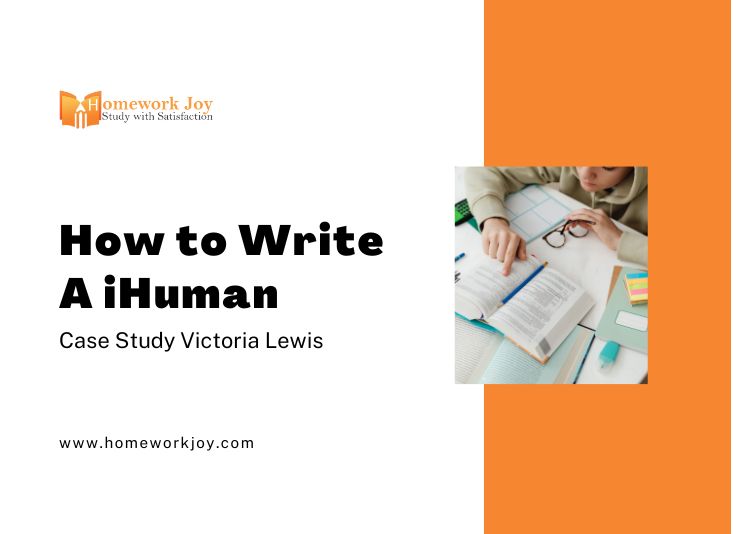The main purpose of the case study is to walk the reader through the situation where the problem is presented and all the background information is also provided. Also, a description of the solution is given along with how it was derived. A case study is written so that the reader can be encouraged to write his/her solutions or can review the solution already written. The main goal of the writer is to present the reader with experiences similar to those the writer had experienced as he or she researched about the situation presented.
There are a few steps that the writer should keep in mind before starting with the iHuman Case Study Victoria Lewis –
- Choose a particular situation in which you want to write.
- Research and gather as much information and data as possible about the situation.
- Analyze and note down all of the elements surrounding the situation
- Determine the final solution that is going to be implemented
- Collect information about why the solution worked or did not work
These steps will help you to create the content of your case study.
If you want more knowledge about how to write case studies, experts at Homework Joy can help you a lot in this aspect. They have been providing help for more than a decade now.
Tip – 1 Narrate the Situation/or the Problem
The reader should have a clear understanding of the situation for which a solution is given or is to be found. You can simply write down the problem given in the study. What you can do is you can begin by sharing quotes from someone very close to the situation.
This helps you to set the tone for the iHuman Case Study Victoria Lewis readers so that they can think of the problem while he or she reads the rest of the case study. This also sets the expectation that you are presenting a piece of information the reader can use to understand the situation further.
Tip – 2 Present The Background
The background is the information that describes why there is a problem. This also consists of facts and figures from authoritative sources. Graphs, charts, tables, photos, videos, audio files, and anything that indicates the problem are very useful here. Quotes from interviews are also recommended.
This section gives the reader of the iHuman Case Study Victoria Lewis information that can be used later to come to their conclusion. A good case study doesn’t let the readers know what they should think. It guides the reader through the thought process that is used to create the final conclusion. The readers can have a different conclusion or can find fault in the logic being presented earlier. That’s okay because there might be more than one solution to the problem. The readers will have their own point of view and background as they read the case study.
Tip – 3 Explain The Solution
This part discusses the answers and the readers’ thought processes that lead up to it. It guides the reader through the piece of information to the solution that was applied. This section might also contain the author’s opinions and hypotheses.
Facts are mostly involved in the decision, but the reader can expect subjective thinking as well in the iHuman Case Study Victoria Lewis.
Tip – 4 Assess the Feedback of the Solution
If the case study is for a recent situation, there might not be enough time to determine the overall effect of the answer.
If the solution has been in place for quite some time now, then an opportunity to gather and review the already existing facts and impressions exist. A summary of how well the answer is working will be included here.
A case study is about telling the story of a problem that has already been fixed. The main focus is on the evidence for the problem and the approach is used to create or find a solution for iHuman Case Study Victoria Lewis.
If you have any queries visit our official website Homework Joy.
